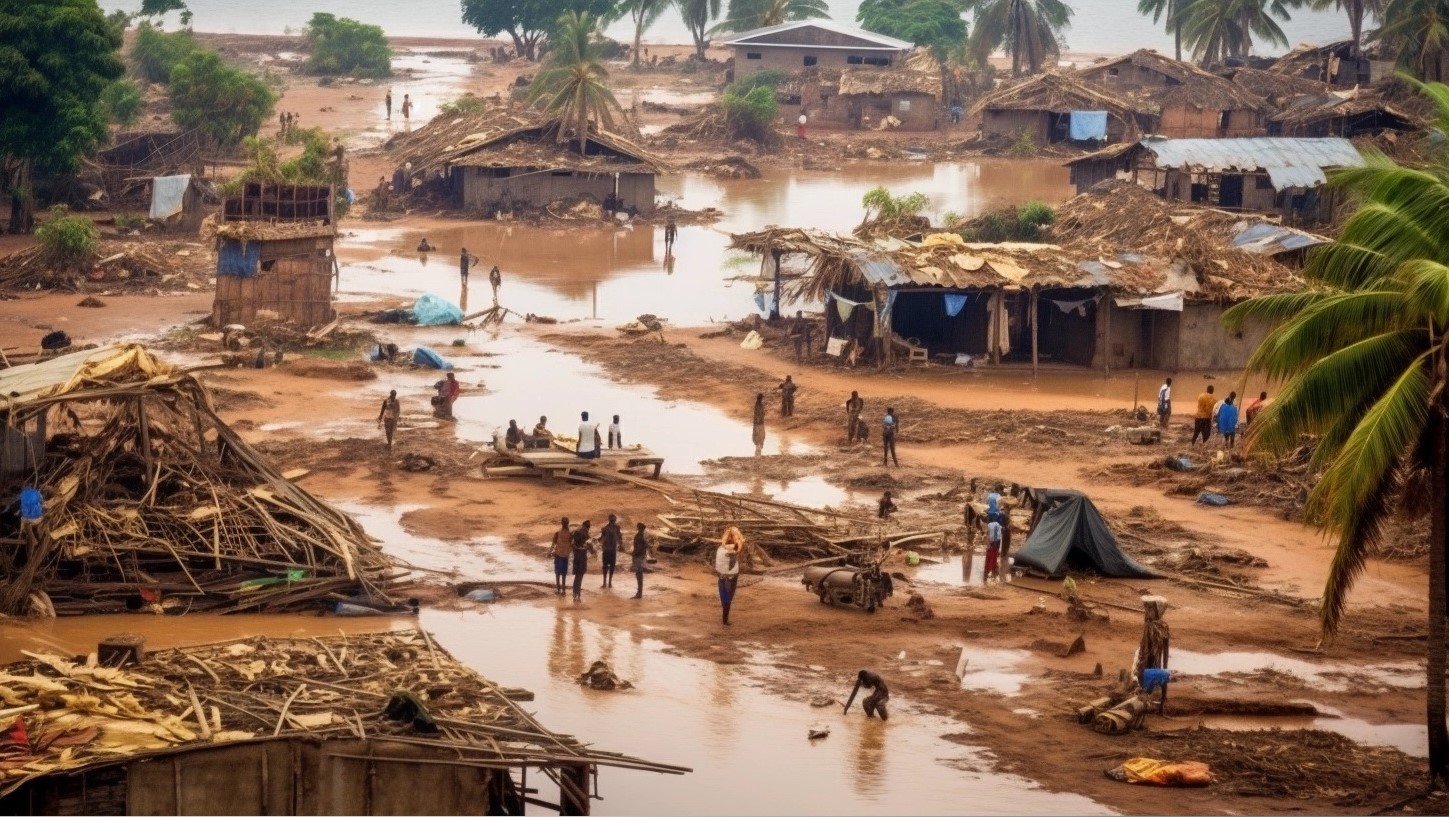
Despite the adoption of a UN-backed international disaster reduction agreement in 2015, an increasing number of people worldwide are being impacted by disasters. In response, experts from around the globe are gathering at the UN Headquarters to accelerate efforts in fully implementing the agreement and creating a safer world.
For the people of Malawi, Cyclone Freddy was an unparalleled catastrophe. In March of this year, the storm ravaged the African country twice during its month-long rampage through southern Africa, breaking records with its destructive force.
The prolonged duration of this extreme weather event would have posed a challenge for any country, but for Malawi, one of the most vulnerable developing nations, the impact was devastating. Hundreds lost their lives, over half a million individuals were displaced, and extensive hectares of crops were washed away.
By early April, hundreds of people were still missing, and around 1.1 million individuals required humanitarian assistance. The severe storm struck during Malawi’s worst cholera outbreak in two decades, further straining an already overburdened healthcare system.
During the same month, a group of independent UN rights experts appealed for increased humanitarian aid and urged Malawi to develop durable solutions that would prevent, minimize, and address the displacement caused by disasters through climate adaptation measures, preparedness, and risk reduction.
The impact of Cyclone Freddy is just one example of the escalating number of complex and costly disasters affecting a growing population. In response, 187 countries signed an international disaster risk reduction agreement in 2015.
Named the Sendai Framework after the Japanese city where it was adopted, this international UN agreement aims to reduce disaster losses. Its objectives include significantly reducing deaths caused by disasters, minimizing damage to infrastructure, and improving early warning systems by 2030.
However, eight years have passed, and little progress has been made. According to the UN Office for Disaster Risk Reduction (UNDRR), the number of people affected by disasters has increased by 80% since 2015. Furthermore, UNDRR highlights the alarming fact that many lessons from previous disasters appear to have been overlooked.
A Midterm Review of the Framework’s implementation, released in April to mark the halfway point between its launch and the 2030 deadline, emphasizes the escalating impacts of climate change since 2015. Developing countries bear the brunt of these unequal consequences, exemplified by the devastating flooding in Pakistan in 2022, affecting over 33 million people and causing extensive damage to agricultural land, leading to widespread food insecurity.
The interconnectedness of societies, environments, and technologies worldwide means that disasters can spread rapidly. The report cites the COVID-19 pandemic as a prime example, originating as a local outbreak in China in 2019 and quickly spreading across the globe, resulting in the deaths of approximately 6.5 million individuals by the end of 2022.
Mami Mizutori, the Special Representative of the UN Secretary-General for Disaster Risk Reduction and head of UNDRR, states, “One doesn’t have to look hard to find examples of how disasters are becoming worse.” She further emphasizes that many of these disasters are preventable as they are caused by human decisions. The Midterm Review calls upon countries to reduce risk in every decision, action, and investment they make.
It is evident that more needs to be done. The costs of disasters continue to rise, while funding for disaster risk reduction falls far short of what is needed to address the issue.
However, the report highlights numerous examples of countries taking action at the national level to protect their citizens from disaster risks. Currently, disaster preparedness plans have been implemented in 125 countries. These plans vary from legislation in Costa Rica that allows institutions to allocate budgets for prevention and emergency response to Australia’s Disaster Ready Fund, which will invest up to A$200 million per year from 2023 to 2024 in disaster prevention and resilience initiatives. Barbados has also implemented disaster clauses that freeze debt in the event of an economic impact caused by a disaster.
While the number of people affected by disasters continues to rise, the proportion of fatalities has more than halved. The disaster-related mortality rate decreased from 1.77 per 100,000 global population in the decade of 2005-2014 to 0.84 in the decade of 2012-2021 (excluding the impact of COVID-19).
The recommendations outlined in the Midterm Report and the measures being taken at the national level will serve as the foundation for discussions at the upcoming High-Level Meeting. These examples provide proof that a safer world is attainable between now and 2030 if the necessary investments in risk reduction are made.
The UN Office for Disaster Risk Reduction (UNDRR) plays a crucial role in helping decision-makers worldwide understand and change their approach to risk. With authoritative expertise and regional offices in five locations, UNDRR builds relationships with national and local governments, intergovernmental organizations, civil society, and the private sector.
UNDRR collects, collates, and shares the latest technical information and data on risk reduction and resilience-building. Their work includes the collaboration of hundreds of experts in science and technology advisory groups, forming essential partnerships with governments and stakeholders across the globe.
A significant part of their efforts involves the development and implementation of inclusive and accessible multi-hazard early warning systems. These systems save lives, as countries with such systems in place experience significantly lower fatality rates compared to those without. On average, fatality rates in countries without early warning systems are eight times higher during disasters.
By focusing on risk reduction, investing in early warning systems, and implementing effective disaster preparedness plans, countries can work towards a safer future, reducing the impact of disasters and protecting lives and livelihoods. The upcoming High-Level Meeting provides an opportunity for leaders to address the challenges that impede progress and commit to comprehensive actions that will pave the way for a safer world.
(Source: UN News)

